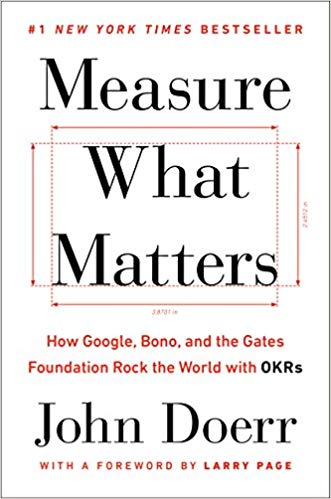What is Continuous Performance Management?
The latest book of John Doerr, Measure What Matters is already a New York Times bestseller, and it’s not a surprise. Not because Doerr is the legendary director of the Venture Capital Firm Kleiner Perkins – and have directed venture capital funding to some of the most successful technology companies in the world (including Compaq, Netscape, Symantec, Sun Microsystems, drugstore.com, Amazon.com, Intuit, Macromedia, and Google) but because in it he shares the two secrets behind many of the successful businesses he has invested in and helped build over the years. His secret is that OKRs and CFRs are, in fact, what matters most:
- OKR stands for Objectives and Key Results; where “O” is for objective and is what the business wants to achieve. “KR” is for the key results and is what the business needs to see in each specific time period in order to achieve the objective.
- CFR stands for Conversations, Feedback and Recognition. These elements, along with OKRs, are foundational to the process of Continuous Performance Management (™) — and is how each employee in your workforce can be motivated to achieve today’s goals and to develop their skills to meet tomorrow’s challenges. Continuous Performance Management replaces the universally loathed and ineffective annual performance review with a valuable, continuous process that actually works for the organization.
OKRs + CFRs = Continuous Performance Management


Ideal Continuous Performance Management Cycle
Why Continuous Performance Management?
Management thought leaders such as the CEB have long been advocating that performance management should be part of managers’ everyday role and that once or twice a year appraisals are not an effective use of time. But it’s no longer just academics who think this. 95% of managers are not satisfied with their organisation’s annual performance process and 75% of employees see it as unfair. Another study has found that only 8% of companies believe that their traditional performance management process drives business value.
In contrast to this, research has found that over 50% of companies where goals are reviewed each month are in the top quartile in terms of financial performance, whereas only 24% of companies where goals are reviewed once a year made it into the same bracket. Similarly frequent feedback is now being labelled the ‘killer app’, having been shown to boost performance by up to 39%. A study by Gallup has also found that employees whose managers hold regular one-to-ones with them are almost 3 times as likely to be engaged.
The role of a software in Continuous Performance Management
To be effective, continuous performance management needs to be collaborative, frequent and take place in real-time rather than retrospectively. It also needs to be monitored to ensure it is being carried out effectively. A continuous performance management software aids this by enabling:
- Objectives to be set collaboratively, aligned with organisational goals and regularly updated
- Action points from 1-1 Meetings to be captured and followed up on, rather than being noted down in a book and forgotten about
- Feedback to be given ‘in-the-moment’ rather than waiting until the next one-to-one
- Progress and obstacles to be captured as they happen
- Reminders to be sent automatically to those who have not had a check-in or given feedback recently
- HR to have visibility of how often check-ins are taking place across the organisation and how frequently feedback is being given
- HR to collate performance and talent data without having to carry out formal appraisals
